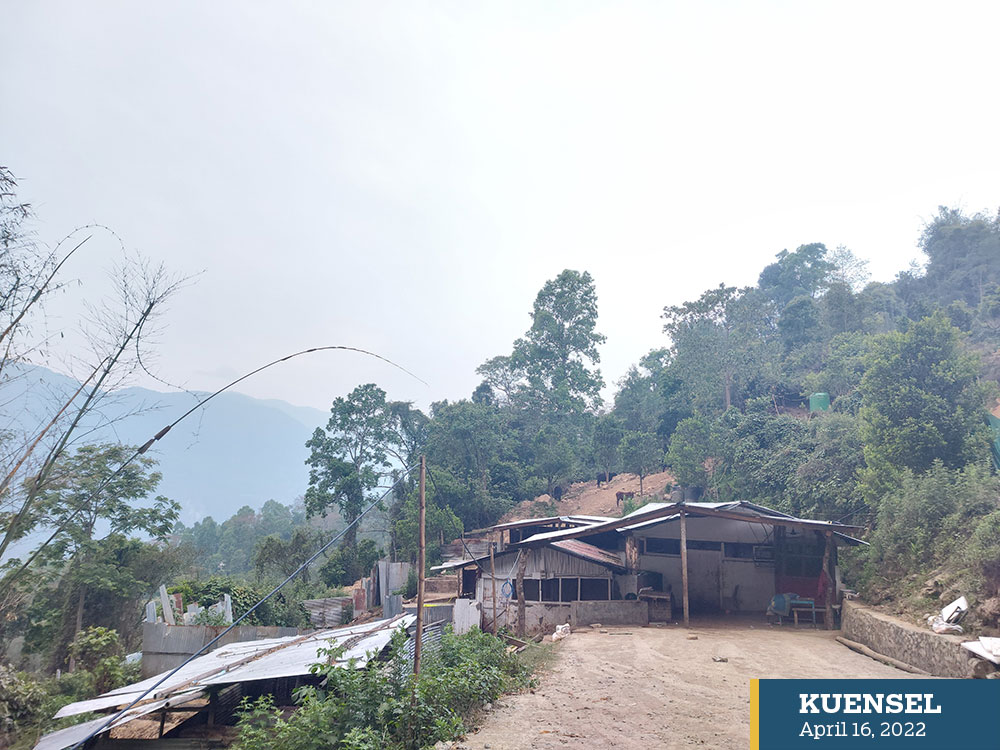Choki Wangmo | Tsirang
What does it take to start and manage a slaughterhouse in a deeply religious country like Bhutan?
Makhep (butcher) Penjor, 67, of Tsirang: “It requires a fool’s courage.”
From Kawajangsa, Thimphu, Makhep Penjor used to drive a taxi and was also a contractor. Even though Bhutanese are against killing animals, he said that the rising demand for meat tells a different story.
“Even monks come to the slaughterhouse to buy meat,” he said. “Why should I stop doing what I do because of such stupid hypocrisies?”
Built on his five-acre land, the slaughterhouse is just about three kilometres away from Damphu town—towards Changchey. In a day, no fewer than 15 Bolero pickup trucks would be waiting at the slaughterhouse.
Meat demand, he said, was high from Thimphu and Paro meat shops.
Reports show that meat import in the country has been increasing: in 2019, Bhutan imported 12,102 metric tonnes of meat items, 1,124 metric tonnes more than the figure for the previous year. The country imported 3,190 metric tonnes of beef in 2018, which increased to 3,783 metric tonnes in 2019.
Has there ever been pressure to quit?
Penjor said that he wanted to give up running the slaughterhouse and meat business many times but the demand for meat in the country kept growing.
He started the slaughterhouse in the early 2000s when the livestock department introduced a policy of reducing unproductive cattle in the country; the decision was approved by the Dzongkhag Tshogdu.
Father of 25 children and a serious vegetarian, Penjor said that running a slaughterhouse in a Hindu community was not easy. He not only faces strong objections from local residents and animal-saving groups, but also has to save himself from machination by local and central officials.
“I don’t kill animals; I just have leased the infrastructure to the people who do the real stuff inside,” said Penjor. “If we are to talk about taking lives, we—humans—are unwittingly or wittingly killing small lives every day.”
Most of the farmers who bring their animals to the slaughterhouse do so as the last resort, he said. Some have loans to repay and children to send to school. “We didn’t force people to bring the animals here. People blame us but they want meat on their plates every day, in each meal.”
He believes that better than handing over animals to the tshethar tshogpas that, according to him, do not care about the animals, a better way was to get rid of them instantly without suffering.
Depending on the animal breed, the slaughterhouse pays between Nu 100,000 and Nu 200,000 per animal.
Penjor is illiterate and does not keep records.
“We face tax and permit issues at check posts and people treat us differently as we are from the meat industry,” said Penjor, who pays a yearly tax of more than Nu 100,000.
Disposal and stench from the slaughterhouse are a nuisance for the residents.
According to residents, the place lacks proper hygiene and waste disposal. Some even claim that blood flows into their fields, road, and water sources.
But Penjor has built an underground storage tank for waste collection, a proper drainage system, and a disposal pit. He said that he improved the infrastructure in 2020 with an investment of about Nu 0.5 million.
The BAFRA official in the dzongkhag, in an earlier interview, said that the site maintenance had been carried out and regular inspections were done every day.
A proud man, Penjor said he has more than 100 wives, most of them very young; many have made away with his gold and money.
Residents also know Penjor as a generous man. The dichotomy shows again: Penjor is a religious man who sponsors the construction of stupas and monasteries.


